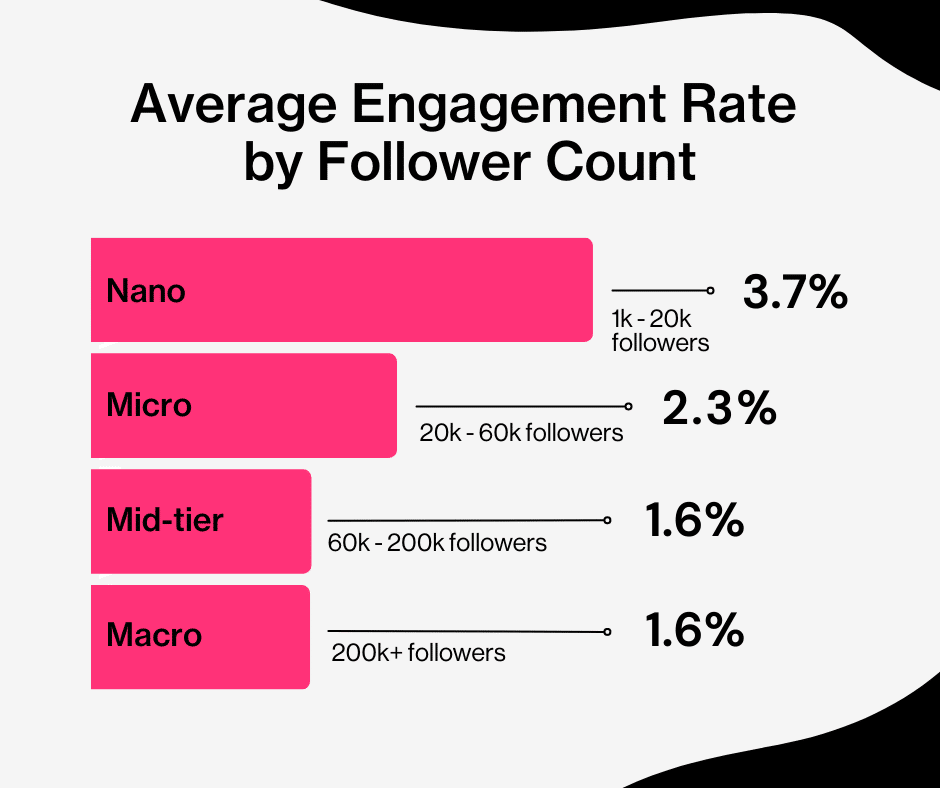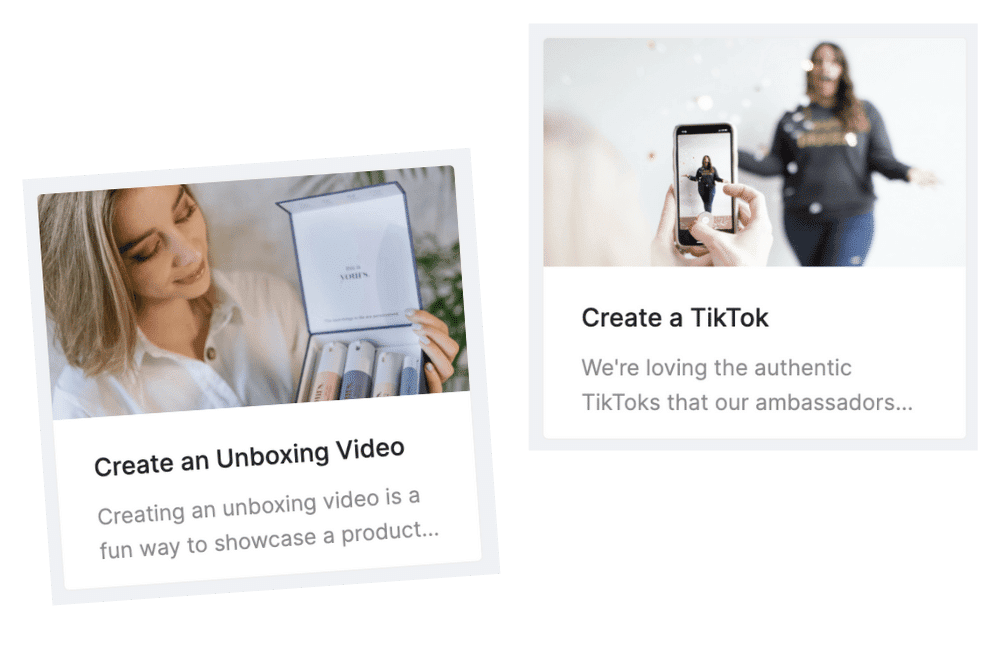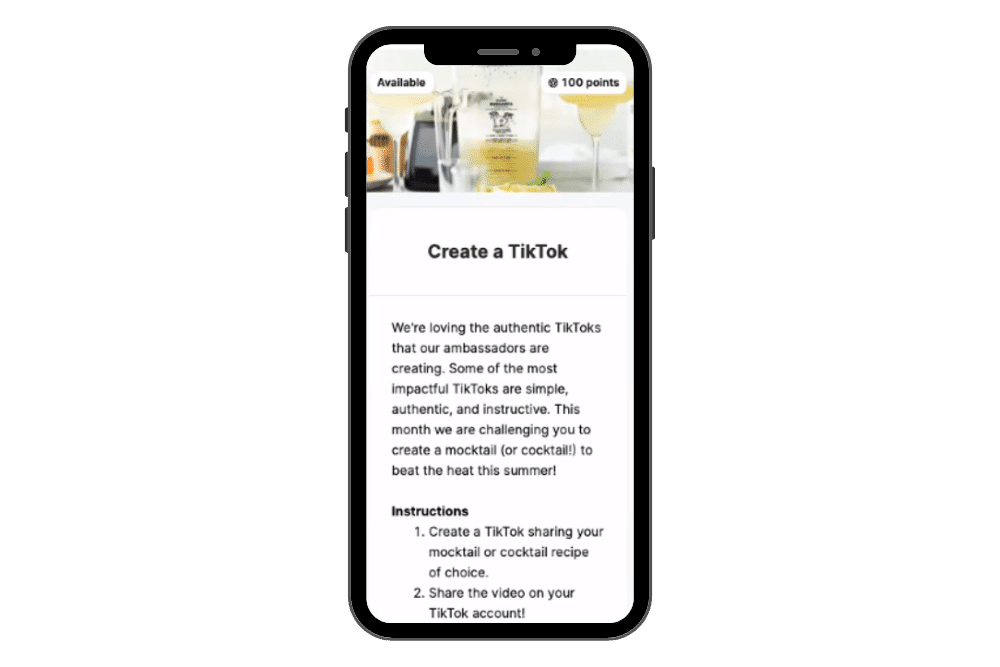
Difference Between Brand Ambassador and Influencer: Who Reigns Supreme
Understanding the difference between brand ambassador and influencer is crucial when it comes to developing an effective marketing strategy. Although both approaches have their own unique advantages and disadvantages, the decision of which one to use is nuanced. It depends on various factors, such as company goals, available resources, and target audience.
By knowing the key differences between brand ambassadors and influencers, businesses can make informed decisions that drive success and resonate with their customers.
Join us for a closer look at brand ambassadors and influencers in marketing! Reaching your target audience has never been more important, and using the strategies of brand ambassadors or influencers can be a game-changer. However, with each approach having its own unique benefits and drawbacks, it can be hard to determine which is the best fit for your company. This helpful blog will explain the difference between brand ambassador and influencer and give you the information you need to choose the right marketing strategy for your business.
Understanding brand ambassadors and influencers
The confusion between the usage of “brand ambassadors” and “influencers” in marketing makes it hard to distinguish between their roles. But using either of these methods to run a successful marketing campaign requires specific skills and plans. To clear up the confusion, it’s essential to understand what each approach means, how they work, and their unique benefits.
In the following sections, we’ll talk more about what brand ambassadors and influencers are and what they do. Also, we’ll share insights on how to select the right approach based on your brand’s objectives and target audience.
Influencers 🌟 are people with a significant following on social media platforms who uses their platform to promote products, services, or ideas to their audience. They are paid based on their reach and engagement and may work with multiple brands simultaneously. Influencers are often chosen because they can reach specific target audiences and have a large number of loyal followers who trust their opinions and suggestions.
Brand ambassadors 👥 are individuals who have a close relationship with a brand and promote its products or services through various channels. They are typically compensated for their efforts and may receive exclusive access to new products, events, or other perks. Brand ambassadors often have a deep understanding of the brand’s values and mission, which allows them to authentically promote the brand to their followers.
🗨️ Nearly half (49%) of people rely on recommendations from influencers when making purchase decisions.
(Source: Twitter & Annalect study)
Brands favor influencers due to their ability to target a wider and more diverse crowd. Selection criteria for influencers include their audience reach and engagement. Typically, influencers generate content that aligns with their personal interests and audience. When done right, influencers advertise products that customers need and want, give helpful advice and reviews, and interact with customers through social media. They help create a sense of trust and loyalty, which leads to increased sales and lower customer acquisition costs (CAC).
Influencers can also help customers learn about new products, services, and deals by reviewing and recommending them. The alignment can lead to even more sales and a further lowering of CAC.
However, working with influencers can be more expensive than working with brand ambassadors, and brands may have less control over the content that is created and shared.
13 differences between brand ambassador and influencer
When it comes to marketing with influencers and brand ambassadors, the decision about which approach to take is layered and nuanced in various factors. Both influencers and brand ambassadors have their own unique advantages and disadvantages and can be used in different ways depending on the company’s goals and objectives, resources, and target audience.
At Roster, we have identified many difference between brand ambassador and influencer. Here are the 13 primary differences.
1 – Relationship with the brand
Brand ambassadors and influencers differ in how they work with the brand.
🌟 INFLUENCER
In a nutshell, influencers have a transactional relationship with the brand. Usually, influencers are paid to promote a product or service once. They may only be committed to the brand for a short time. Unlike brand ambassadors, influencers are not very connected to the companies they promote. Think of it as essentially a one-and-done advertisement. Also, they usually work with multiple brands at the same time.
👥 BRAND AMBASSADOR
Generally have a more personal, long-term relationship with the brands they represent. They are often enthusiastic customers passionate about the brand and its products or services. Ambassadors really care about the company’s success, so their work isn’t just a one-time thing. The relationship between the brand and ambassadors takes on a partnership-style approach, where the arrangement is less formal and more personal. This leads to a strengthening of the bond between the brand and its ambassadors.
2 – Alignment
Brand ambassadors and influencers can unite in several ways, but there are also significant differences in their alignment with a brand’s values, target audience, and message.
🌟 INFLUENCER
Influencers often have a bigger following and a bigger effect on how many people see and interact with something on social media. They can provide a broad reach for the brand’s message, but their engagement is usually lower than that of brand ambassadors. Usually influencers are usually chosen based on how well they can reach a specific target audience. How closely their values match those of the brand is less important.
👥 BRAND AMBASSADOR
In contrast, brand ambassadors may have fewer followers, but they tend to be more involved with their audience, which leads to more meaningful interactions. Brand ambassadors are usually a better fit for a brand’s values, target audience, and message because they are chosen based on how much they care about the brand and its purpose. They often share similar values with the brand and have a better understanding of the brand’s message.
3 – Compensation
Regarding compensation, there are some differences between what influencers and brand ambassadors may receive. Here’s how the payment for influencers who get cash or products compares to the compensation for brand ambassadors who receive incentives, bonuses, or other perks:
🌟 INFLUENCER
Regarding influencers, you’ve got to pay to play – and the price tag can be steep! Because of their huge following and influence, many fall into the category of top paid influencers, demanding top dollar for their services. And if that weren’t enough, some influencers may refuse to give brands the green light to use their images and content.
Unless you’ve got a huge marketing budget to spare, working with influencers can be a pricey and risky proposition. But hey, who needs influencers when you’ve got a tribe of loyal, affordable brand ambassadors at your side?

👥 BRAND AMBASSADOR
Rather than shelling out big bucks, savvy brands reward their ambassadors with discounts and free products. The reason being, brand ambassadors are often passionate about the brand and its wares, so they’re happy to work on a more informal basis and create fantastic content without large comp packages.
The brand ambassador salary in the United States can vary widely depending on the company, level of experience, and scope of the responsibilities. On average, a brand ambassador may earn around $17 per hour, with some earning much more per hour. Also, they receive non-cash incentives and discount codes.
4 – Content and promotion
Social media has become a crucial marketing tool for businesses seeking to connect with their audience in the digital age. To do this, many companies use the power of influencers and brand ambassadors, who are experts at making content that is interesting and promotes their brand and its products.
🗨️ 74% of people turn to social networks for guidance on purchase decisions.
(Ogilvy Cannes)
🌟 INFLUENCER
They often place a lot of value on making compelling content that gets their followers to interact. This can include asking questions, hosting polls, and using interactive features on social media platforms. Influencer whitelisting plays a key role here, as it allows brands to have more control over how their products are represented while still benefiting from the influencer’s creativity and reach.
👥 BRAND AMBASSADOR
May prioritize creating informative content that helps educate their followers about the brand and its products. They may also focus on creating more personal and relatable content to build a stronger connection with their followers.

5 – Audience
When considering the difference between brand ambassador and influencer, one factor to keep in mind is the audience. While both ambassadors and influencers have the ability to connect with their followers, the audience for each can vary significantly.
🌟 INFLUENCER
Typically have a larger audience that spans a broader range of demographics and interests. But the level of engagement with their audience may be lower because many of their followers may just be passing by or not care as much about the content they make.
👥 BRAND AMBASSADOR
Size doesn’t always matter—just ask your brand ambassador! While these folks may not have the massive followings that influencers do, they’ve got something even better: a smaller, more targeted audience. Brand ambassadors have a tribe of die-hard fans who are totally invested in their content. They’re not just scrolling aimlessly through their feed. They’re hanging on every word and craving that sweet, sweet brand goodness. And that’s not all—because of this close relationship, your brand ambassador has something else influencers can’t trump: trust.
With the audience size, it’s quality over quantity every time! Sure, influencers may have a bigger following, but your brand ambassador’s crew is all about the good stuff, which means more focus, engagement, and conversions for your brand. It’s like having a squad of hype people who are always down for your brand and ready to share the love.
And if you don’t believe us, M. Nick Hajili of the International Journal of Market Research says it best:
🗨️ “Trust, encouraged by social media, significantly affects intention to buy. Therefore, trust has a significant role in ecommerce by directly influencing intention to buy and indirectly influencing perceived usefulness.”
6 – Engagement
🌟 INFLUENCER
While influencers may have a large following, this also comes with a less attached audience. The low engagement is due to several factors, such as the type of content they create, the quality of their followers, or the authenticity of their brand partnerships. So, their content might not be as good at getting meaningful interactions like likes, comments, shares, or sales. This can make it hard for brands to reach their marketing goals when they work with influencers who don’t get much engagement.
👥 BRAND AMBASSADOR
When examining the difference between brand ambassador and influencer, it’s important to note that brand ambassadors are typically selected for their strong engagement and connection with their followers. Most of the time, they have a smaller but more loyal audience that cares a lot about their content and suggestions. This can help the brand ambassador build a stronger, more trusting relationship with their followers, leading to more conversions and sales for the brand. Also, brand ambassadors are more in tune with a brand’s values and messages, making it easier to get people interested.

7 – Versatility
🌟 INFLUENCER
Influencers are very good at making exciting and varied content for their followers, which opens up a wide range of campaign options. They can create different types of content, such as videos, blogs, social media posts, and more, to promote a brand or product in various ways. Influencers also tend to have more followers, so they may be better for campaigns with a wider appeal that can reach more people.
👥 BRAND AMBASSADOR
Brand ambassadors typically prioritize promoting a select few brands, which can limit their ability to participate in every campaign. However, brand ambassadors can create more authentic and relatable content due to their close relationship with their audience. This can help build trust and credibility with their followers, making it more likely that they will buy something from the brand or do something for it.

8 – Control and flexibility
When it comes to control and flexibility, there are trade-offs to consider between working with influencers and brand ambassadors.
🌟 INFLUENCER
Influencers love their independence. And that often means they’re working with multiple companies and creating all kinds of media— whether it fits your brand’s values or not. The result? You might be left with some less than stellar posts. As a marketer, plan on less control over the messages or ensuring the content matches the brand vibe.
👥 BRAND AMBASSADOR
With brand ambassadors, it’s all about getting up close and personal! These folks care about your brand and are committed to its success, which means more control over the content created and shared. And because ambassadors focus on just a few brands rather than dozens, they can create UGC that perfectly matches your brand’s values and goals. It’s a win-win: more control for you and more authentic for your audience.

9 – Trust
When it comes to influencer marketing, trust is everything. But not all influencers are created equal. Here’s a breakdown of the difference between brand ambassador and influencer in regards to trust.
🌟 INFLUENCER
With influencers, trust can be a mixed bag. While some influencers have a solid reputation and a devoted following, others may be seen as less trustworthy or even fake. This wide range of trustworthiness can pose a challenge for marketers when trying to choose which influencers. Selecting the wrong influencer can have negative consequences for the brand’s reputation.
👥 BRAND AMBASSADOR
People who follow brand ambassadors tend to trust them a lot because they know the brand and its products so well. They’ve got a tribe of loyal fans who look to them for guidance and inspiration. This high level of trust can be beneficial, especially when brands are trying to build long-term relationships with their customers.
🗨️ 92% of people trust recommendations from friends and family over other sources.
(Nielsen)
10 – Authenticity
One crucial factor distinguishing brand ambassadors from influencers is their level of authenticity. When it comes to influencer marketing, authenticity is everything. That’s why it’s vital to understand the difference between brand ambassador and influencer when it comes to being real and relatable.
🌟 INFLUENCER
Authenticity is a big deal in influencer marketing. Some influencers have a real connection to the brand, but others are seen as fake and opportunistic. Thus, companies should carefully choose influencers who represent their values and can make authentic and relatable material. By doing so, brands can create powerful content that truly connects with their target audience, drives engagement, and generates sales.
👥 BRAND AMBASSADOR
Brand ambassadors are the real deal. These rock stars are effective because they genuinely love the brand and its products. And this love comes through in the things they create and share with their followers. Marketers who want to tap into the power of brand ambassadors should look for someone who embodies the brand’s message and has a genuine connection to the company.
By partnering with a brand ambassador, you can be sure that your messaging is authentic and will resonate with your target audience.
11 – Ease of discovery
Looking for the perfect spokesperson for your brand? The two main options to consider are influencers and brand ambassadors. But what’s the difference between a brand ambassador and an influencer in terms of ease of discovery? Let’s break it down.
🌟 INFLUENCER
Influencers can be tricky to discover, especially if you’re just starting out or working in a specific niche. With so many influencers out there, it can feel like finding a needle in a haystack. It’s no easy task to find a good fit, and brands may need to invest in influencer discovery tools or platforms to identify and reach out to the right influencers. Plus, the cost of working with influencers can be high, as many demand substantial compensation for their services.
👥 BRAND AMBASSADOR
On the other hand, brand ambassadors are often easier and less expensive to discover. We might even say they can be a breeze to find. Why? Because the best ambassadors may already be your customers! When you work with brand ambassadors, you’re tapping into a group of people who are already passionate about your brand and its products. They’re like your own personal cheerleaders, rooting for your success. By leveraging your customer base to identify potential ambassadors and you may not need an expensive discovery tools.
12 – Connection process
Making connections is crucial because it is the basis for successful influencer or ambassador marketing. It is the process of finding the right influencers or brand ambassadors, getting in touch with them, and building a relationship with them so they can promote the brand’s products or services to their followers or network.
🌟 INFLUENCER
Connecting with influencers can be a complex dance that requires careful research, strategic planning, and savvy negotiating skills. Brands must find influencers who align with their values and messaging and negotiate a payment package that works for both parties.
Once the connection is made, building a meaningful relationship with the influencer can be tricky, as they are often wooed by many brands vying for their attention. It can be challenging for companies to build long-term relationships with influential people and get the most out of working with them.
👥 BRAND AMBASSADOR
Connecting with brand ambassadors can be as easy as reaching out to existing customers who are already passionate about your brand and its products. No need for fancy influencer discovery tools or complicated negotiations! Loyal customers already have a personal connection with your brand, making it easy for them to start creating content that resonates with their own followers.
Because they’re already in love with your products, ambassadors are more likely to be in it for the long haul. They’ll stick around for a while, helping you build a lasting relationship with your audience. All in all, it’s a win-win situation that can save you time and resources while building a loyal community of ambassadors for your company.
13 – Overall cost
Cost is among the most important considerations. For a perspective on the investment required, reference this list for the staggering amounts that top paid influencers and brand ambassadors command.
Consider these consider these key expenses: compensation, program management, discovery tools, content creation, and tracking metrics.
🌟 INFLUENCERS
Influencers often command high fees, posing a challenge for smaller brands. Additional costs include using platforms for influencer discovery and negotiation. Their content creation, often professional-grade, demands more resources and higher production costs.
👥 BRAND AMBASSADORS
Brand ambassadors, compensated with incentives like discounts or free products, can be more budget-friendly. Their involvement usually incurs lower program management costs and reduced content production expenses, as they create organic UGC and readily allow brands to use their content. However, indirect costs such as product discounts still apply.
Battle of the marketing titans
Even with all the information we’ve discussed, knowing which option is best for your marketing can still be tough. To help you make an informed decision, we’ve created a handy chart that compares the key differences between brand ambassadors and influencers. See at a glance how they differ in all 12 categories, including trust, authenticity, ease of discovery, cost, and more. By weighing the pros and cons of each approach, you can determine which one aligns best with your goals, values, and budget.
| 🌟 INFLUENCER | 👥 BRAND AMBASSADOR | |
| Relationship | Transactional | Formal and long-term |
| Alignment | Reach and engagement | Alignment with brand’s values, target audience and message |
| Compensation | Cash or products | Incentives, bonuses, or other perks |
| Content and promotion | Own interests and audience | Align with the brand’s message |
| Audience | Large | Small but more engaged |
| Engagement | Low | High |
| Versatility in campaigns |
High | Low |
| Control and flexibility | Low | High |
| Trust | Can vary | High |
| Authenticity | Usually lower | High |
| Ease of discovery | Can vary | High |
| Connection process | May be lengthy and involve contract negotiation | Easy |
| Cost | High | Low |
Final verdict in the difference between brand ambassador and influencer
There is no definitive answer to who reigns supreme between brand ambassadors and influencers, as both have unique strengths and advantages. It ultimately depends on the specific needs and goals of the brand and the type of audience they are trying to reach.
Brand ambassadors are often a cost-effective way for companies to build long-term relationships with passionate customers and create authentic content. While influencers can offer a larger audience and more exposure, making them perfect for one-time campaigns and quick brand awareness.
The key is for brands to carefully evaluate their options and consider factors such as audience demographics, brand values and messaging, and overall budget when deciding between working with brand ambassadors or influencers. Ultimately, a strategic combination of both approaches may be the best way to maximize the benefits of both types of partnerships and achieve a well-rounded and effective marketing campaign.